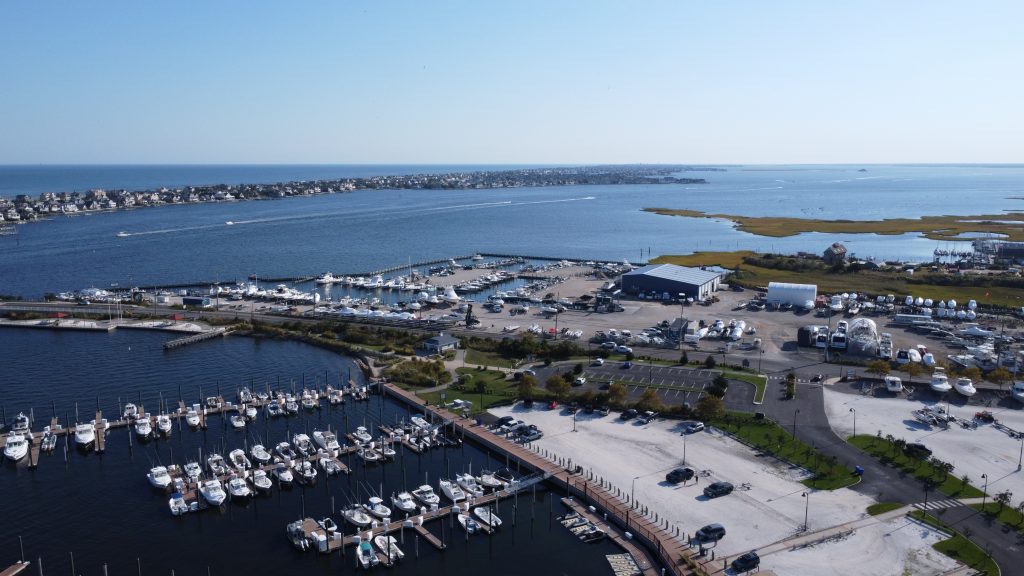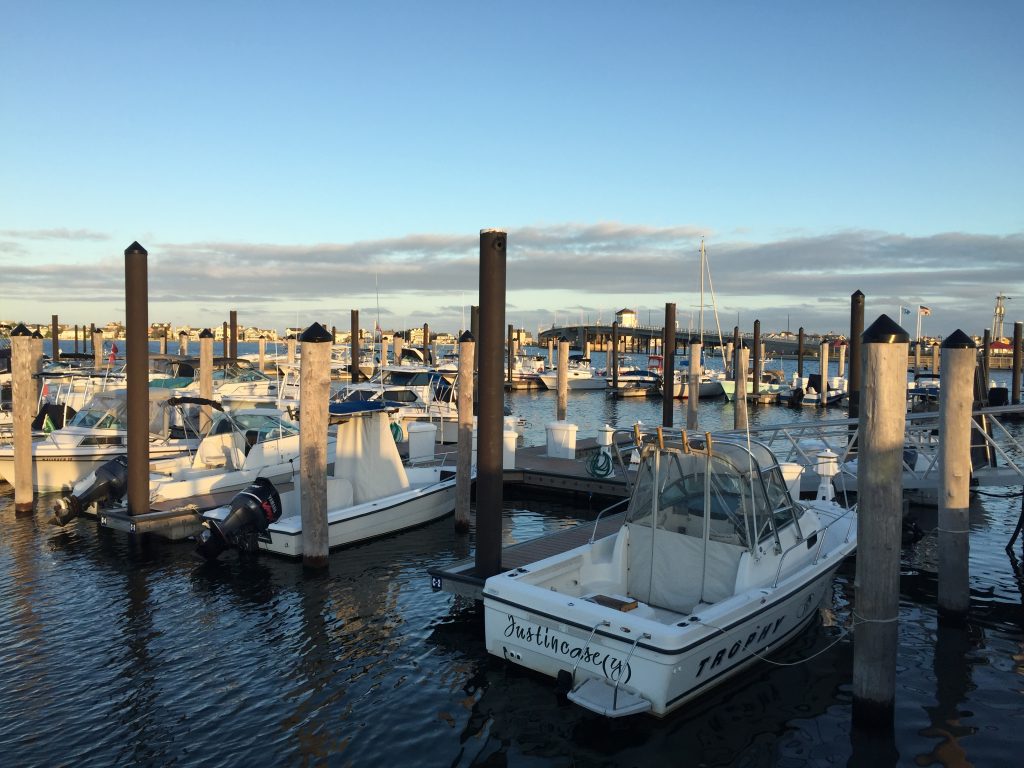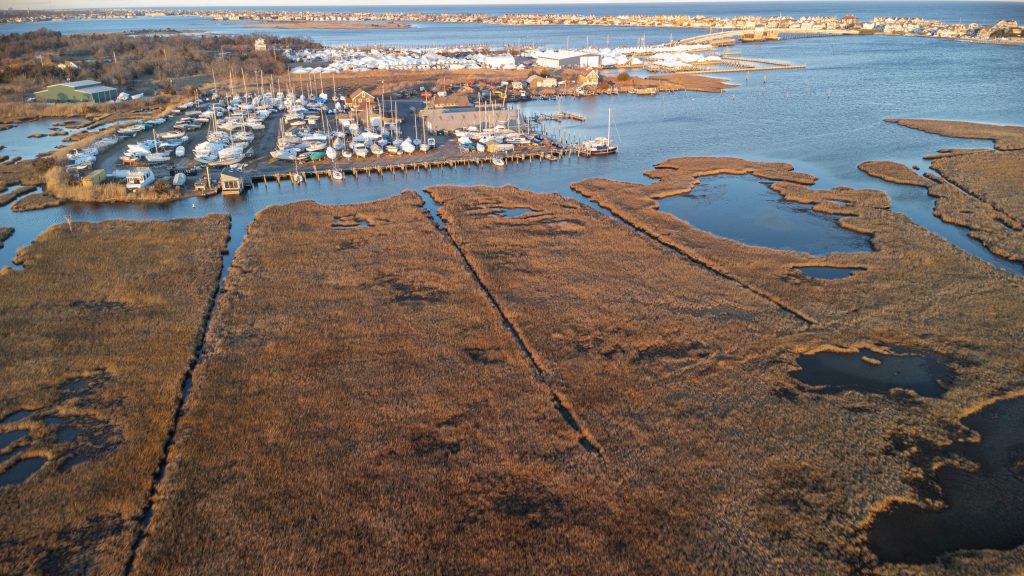
Salt marshes in Brick Township’s portion of the Edwin B. Forsythe National Wildlife Refuge, Jan. 2023. (Photo: Daniel Nee)
Brick Township has begun a long-awaited project to dredge the bay bottom under Traders Cove Marina, in partnership with a federal and state project to restore local marshlands that have deteriorated over the years.
The first phase of a dredging program at Traders Cove was set to get underway this week, and is expected to continue through Dec. 31, the date by which most dredging projects need to be wrapped up in order to protect winter flounder spawning. The project, described by township officials as “vital for maintaining safe and accessible waterways,” involves removing accumulated sediment from beneath the boat slips within the marina. The dredged material will then be repurposed for marsh restoration and ecological enhancement at the adjacent Forsythe National Wildlife Refuge, making the effort both a practical and environmentally beneficial undertaking.
Traders Cove Marina, and the surrounding park by the same name, is owned by the township. The site had been slated to be developed with condominiums before being purchased and preserved with a combination of funds from the township and state governments. It is among the largest publicly-owned marinas in Ocean County.
|
|
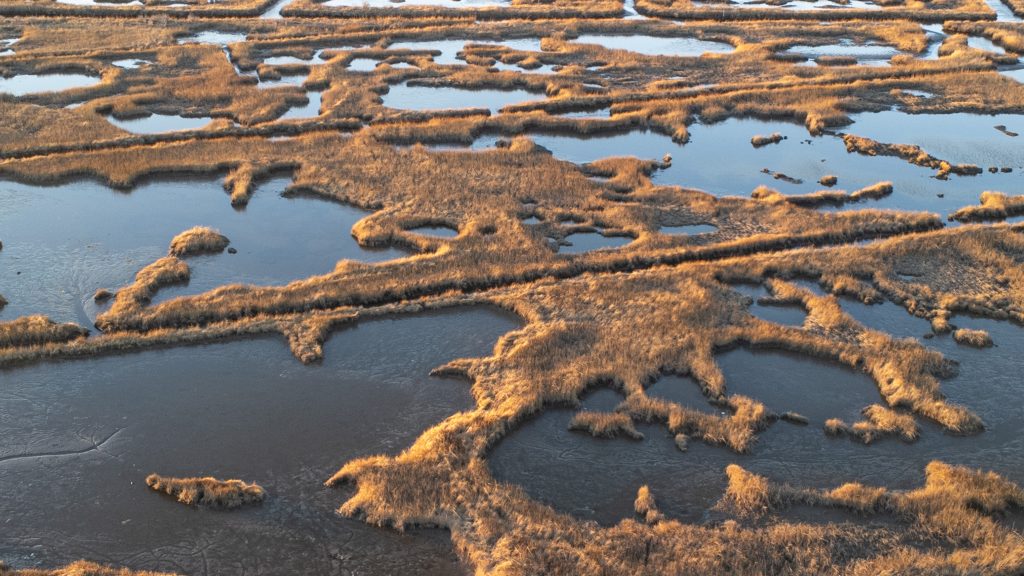
Salt marshes in Brick Township’s portion of the Edwin B. Forsythe National Wildlife Refuge, Jan. 2023. (Photo: Daniel Nee)
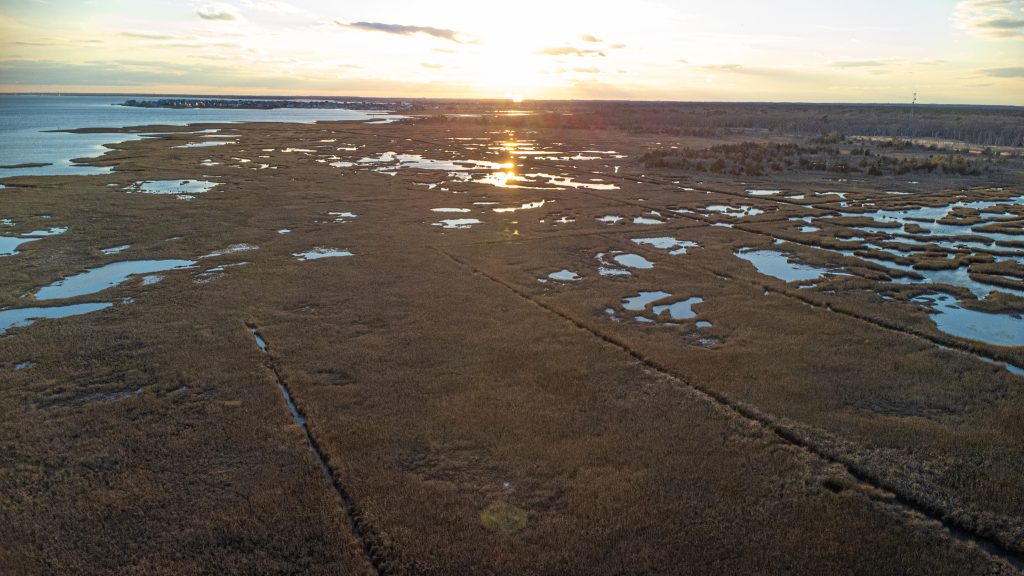
Salt marshes in Brick Township’s portion of the Edwin B. Forsythe National Wildlife Refuge, Jan. 2023. (Photo: Daniel Nee)
“Dredging Traders Cove has become necessary due to the shallow depths that have developed over time,” said Mayor Lisa Crate. “This project will ensure that Traders Cove remains navigable and safe for residents and visitors that use the marina. The project has the added benefit of restoring and enhancing the ecosystem of the Forsythe National Wildlife Refuge.”
The refuge encompasses the majority of marshlands and sedge islands in and around northern Barnegat Bay and the Metedeconk River. In all, its territory runs from Brick southward towards the Atlantic City area, with the northern portion being among its most expansive areas.
According to township officials, the project’s primary objective is to improve navigation by deepening the boat slips, achieving a dredging depth of approximately 3-feet below the channel surface, or 6-feet below the mean high-water mark. During the dredging process, material will be collected beneath the water’s surface and transferred through a pipeline to the refuge for eco-friendly repurposing.
Given the sensitive nature of the marine environment around Traders Cove, the contractor, Mobile Dredging of Newfield, N.J., will use a turbidity curtain – often referred to as a “boom” – to minimize disruption and control sediment dispersal. These curtains are commonly used in marine construction projects to contain sediment and protect nearby water quality. They play a critical role in mitigating environmental impact by reducing sediment spread, ensuring the surrounding ecosystems are safeguarded – they do not indicate pollution is being released into the water, as commonly thought.
The dredged materials have been pre-approved for use by both the New Jersey Department of Environmental Protection (NJDEP) and the United States Fish and Wildlife Service (USFWS), will provide “significant ecological benefits,” the township said in an announcement of the start of the project. Their placement on the marsh will help restore and enhance wetland areas while improving habitats for threatened and endangered species, including the Salt Marsh Sparrow and Black Rail. The habitat restoration aspect of the project will further bolster water quality and contribute to the resilience of the local ecosystem, and could be beneficial for stormwater management and flood control.
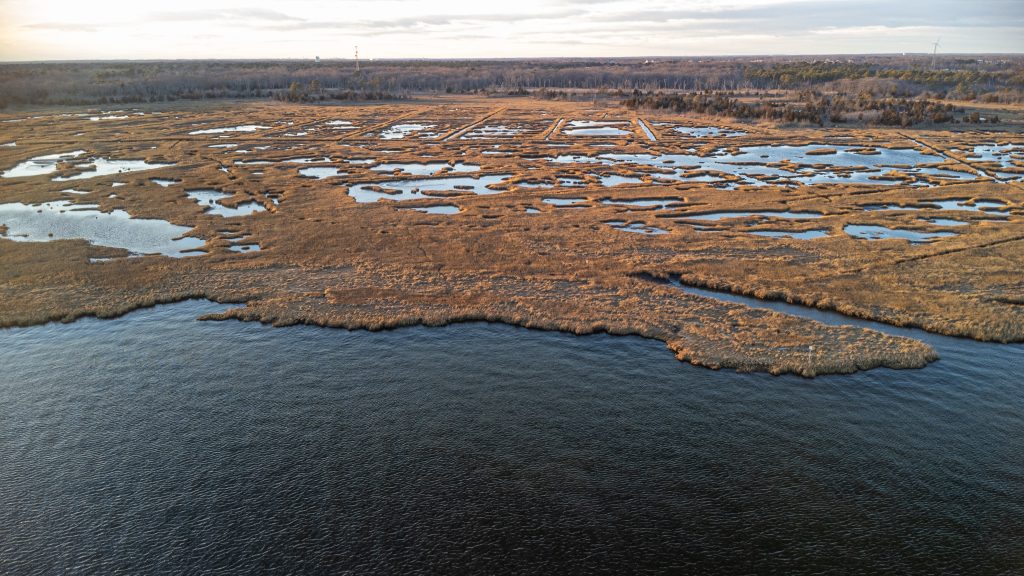
Salt marshes in Brick Township’s portion of the Edwin B. Forsythe National Wildlife Refuge, Jan. 2023. (Photo: Daniel Nee)
The marsh restoration component of the project is being funded by way of revenue generated by the Regional Greenhouse Gas Initiative – a “cap and trade” program that New Jersey has participated in – and will have no cost to municipal taxpayers.
ACT Engineers has been contracted to oversee the project. Officials have previously said the dredging effort mated to marshland restoration could act as an example of how dredge material is disposed-of in future projects in residential areas. Brick officials, during the mayoral administration of John Ducey, formulated a unique town-wide dredge permit to allow private property owners to pay only for the physical work of dredging and removing sediment, with the sometimes-arduous administrative process having been previously approved. Residents who live along the waterfront as well as lagoons can agree, under the program, to a voluntary assessment to fund dredge projects in their neighborhoods.

